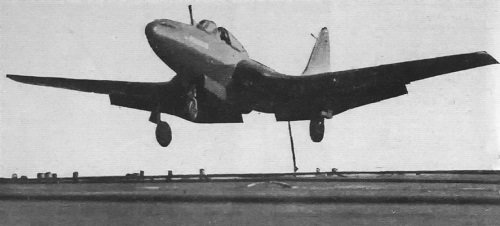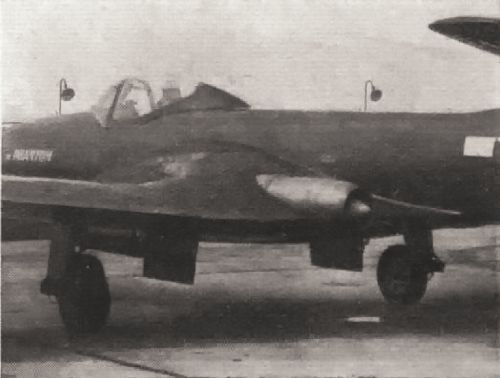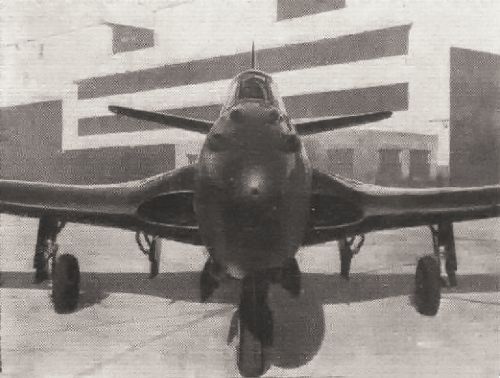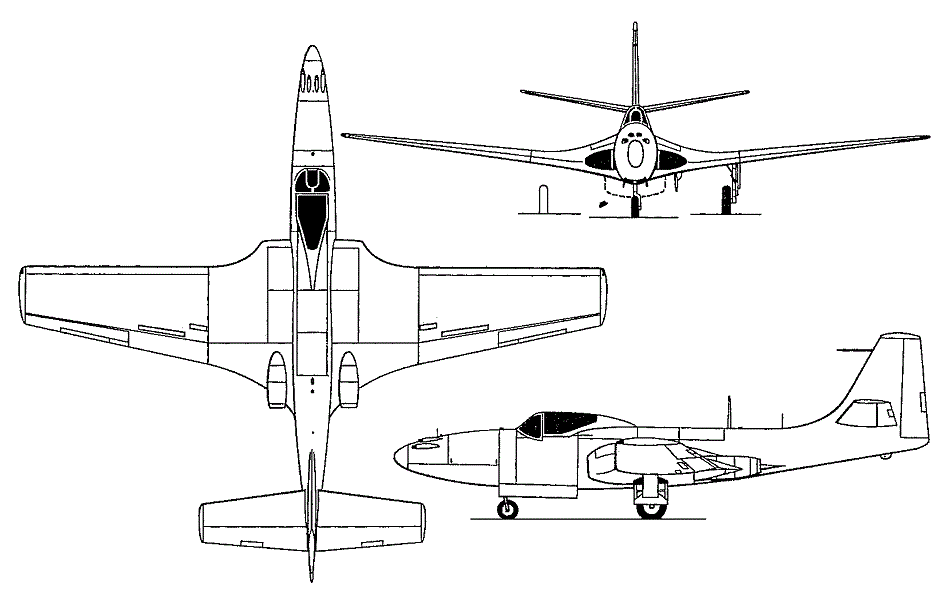
McDonnell XFD-1 Phantom 1

By the beginning of 1943 Westinghouse had made considerable progress with, the engine side of things, and the next job was to design an efficient airframe. The US Navy’s Bureau of Aeronautics decided to call on the services of the McDonnell Aircraft Corporation, the resultant joint effort to be designated McDonnell XFD-1 Phantom 1.

The designers set out to produce the smallest possible fighter that would satisfactorily carry a pilot, four 0.50-inch guns and their ammunition for a specified length of time. Weight, wing area and even engine power were treated as secondary consideration. Everything was to be kept as simple as possible with no “frills” or unnecessary gadgets to complicate production. Attractive but unorthodox ideas such as a tailless or tail-first layout (to keep the tail out of the way of the jet exhaust) or a prone position for the pilot were quickly put aside, as it was wisely considered that it was difficult.


By January, 1945, the last drawings had been finished, the last airframe parts made and assembled.
Finally, the whole machine was given a very smooth high-gloss finish and was ready for its first flight, but . . . only one engine was ready for installation.
McDonnells had such confidence in their XFD-1, however, that, after a few ground runs and taxying tests, they decided to make the first flight on just the one engine.
This test was completely successful on 26 January 1945 and showed that, because its engines were so close inboard, the XFD-1 had an almost negligible yawing movement on one engine. A fact that could easily save pilot’s life if an engine got shot up in action or failed during take-off.


